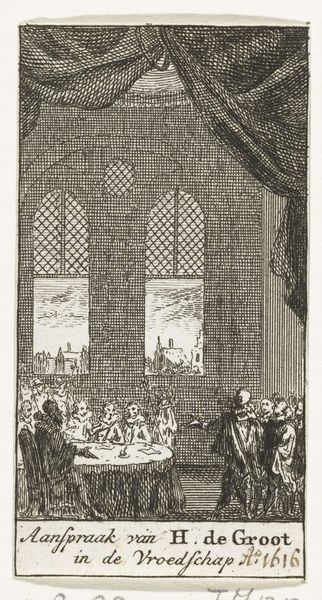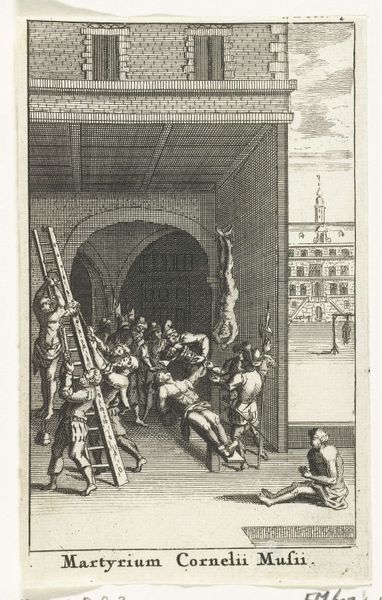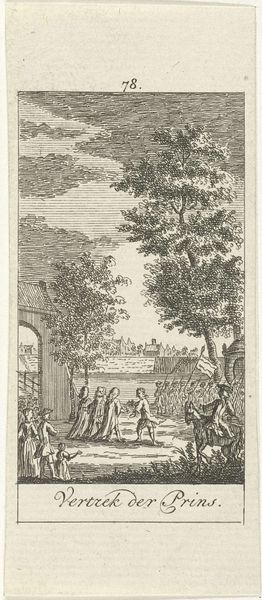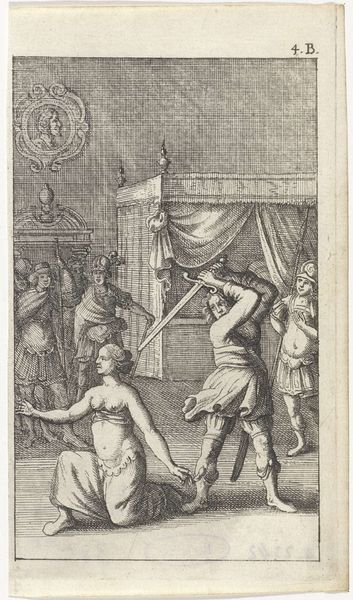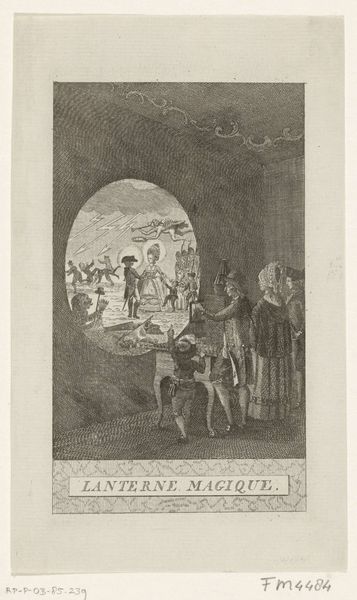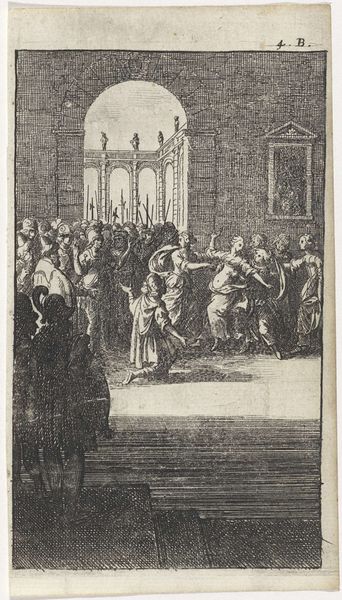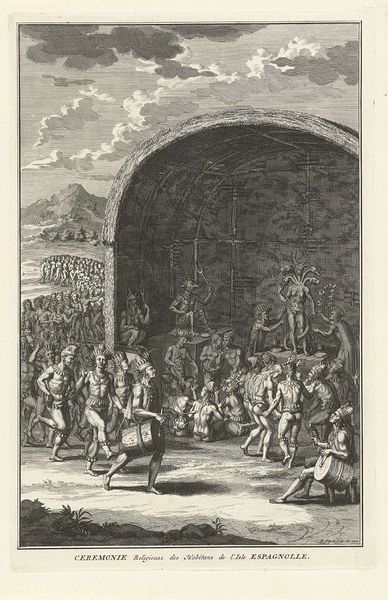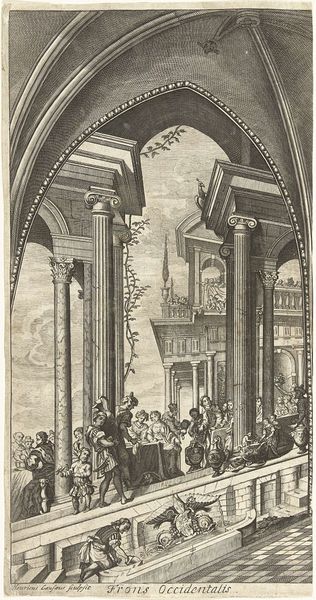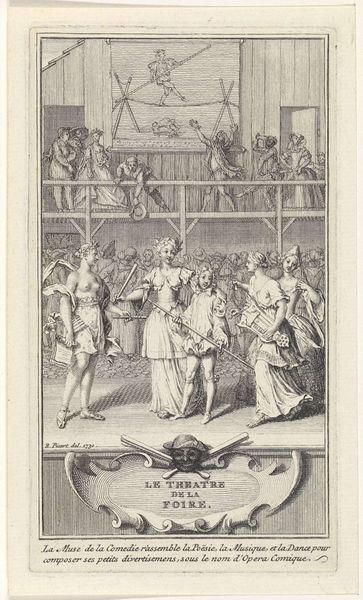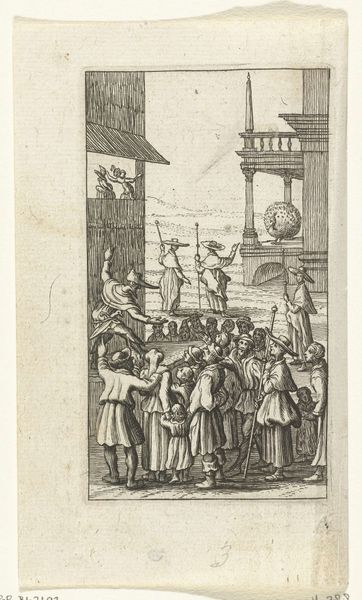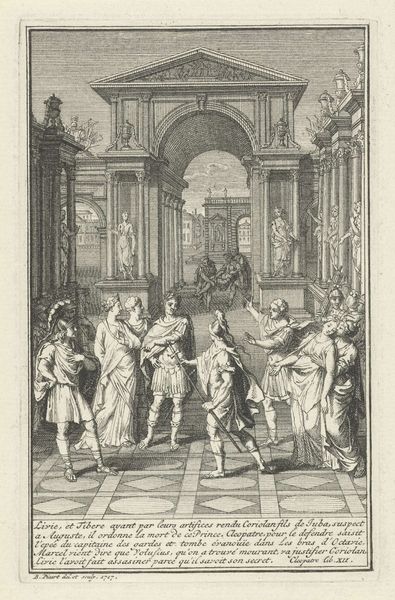
print, engraving
#
narrative-art
#
baroque
#
dutch-golden-age
# print
#
figuration
#
line
#
history-painting
#
engraving
Dimensions: height 80 mm, width 42 mm
Copyright: Rijks Museum: Open Domain
This print, depicting the plundering of a Remonstrant church in Amsterdam in 1617, was made by Simon Fokke sometime in the 18th century. It is an etching, a printmaking process that allows for detailed, linear work. The image is created by drawing into a wax ground on a metal plate, then bathing it in acid, which bites away the exposed lines. Consider the sharp contrasts and the density of the lines, which create a sense of chaos and violence. The etching process allowed Fokke to capture the event with precision, recording the architectural details of the church, as well as the actions of the rioters. The print is not just an image, but a material record of a specific moment in time, made possible by the skilled labor of the printmaker. The act of plundering itself underscores issues of labor and class. The rioters, likely from a lower social class, are taking possession of religious objects, inverting the usual social order. The print serves as a reminder that the making and meaning of art are deeply entwined with social context.
Comments
No comments
Be the first to comment and join the conversation on the ultimate creative platform.
